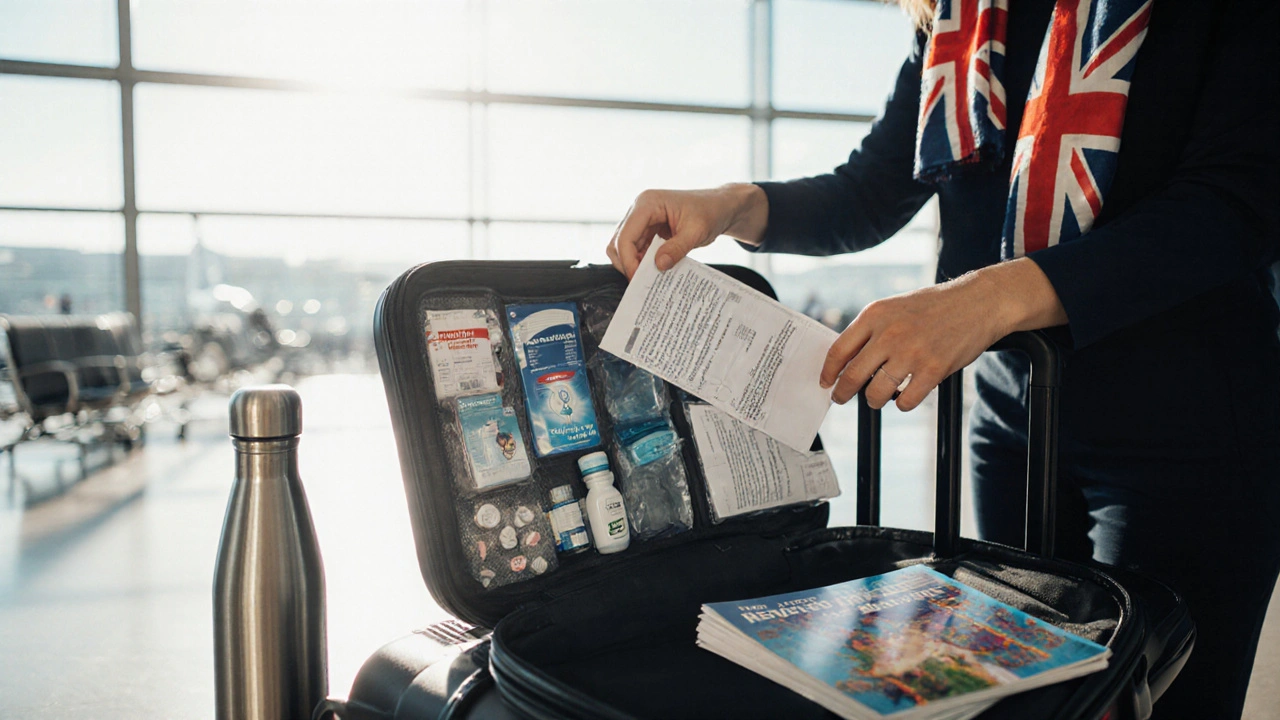Antidiarrheal Medication for Travel – What to Pack and How to Use It
Got a gut that rebels when you cross borders? You’re not alone. Diarrhea is the most common traveler’s complaint, and the right medicine can save you from cramping, missed tours, and uncomfortable hotel trips. Here’s a straight‑forward guide to picking, packing, and using antidiarrheal meds while you’re on the move.
Pick the Right Drug for the Situation
Not every antidiarrheal works the same way. Loperamide (Imodium) slows gut movement and is great for mild, non‑bloody diarrhea. If you suspect a bacterial cause, a single dose of an antibiotic‑based combo, such as azithromycin, may be needed – but only after a doctor’s okay. Bismuth subsalicylate (Pepto‑Bismol) does two jobs: it eases loose stools and reduces stomach inflammation.
Pack Smart, Pack Light
Travel kits should stay under the weight limit and fit in a small zip‑lock bag. Bring one or two tablets of loperamide, a chewable or liquid form of bismuth subsalicylate, and a short‑course antibiotic if your doctor prescribed one. Include a small bottle of oral rehydration salts – replacing fluids is as important as stopping the stool.
Label each container with its name and dosage. If you travel internationally, keep the medication in its original packaging to avoid customs problems. A copy of your prescription (or a doctor’s note) can be handy for countries that require proof of medical need.
Know the legal status of each drug at your destination. Some places restrict loperamide or bismuth products, so a quick online check before you leave prevents surprises at the airport.
When to Take It and When to Skip It
Start loperamide only after the first loose stool, unless you’re instructed otherwise by a health professional. If you have a fever, blood in the stool, or severe abdominal pain, stop the medication and seek medical help – slowing the gut can trap harmful germs inside.
Bismuth subsalicylate can be taken at the first sign of upset, but avoid it if you’re allergic to aspirin or other salicylates. Remember, these meds treat symptoms, not the cause. If the diarrhea lasts more than two days, or you’re feeling weak, get a doctor’s opinion.
Hydration is the real hero. Sip water, clear broth, or an oral rehydration solution every hour. A common mistake is to rely only on medication and ignore fluid loss – that can lead to dehydration faster than you think.
Practical Tips for the Road
Eat cooked foods that are hot, avoid raw salads, and wash fruits with bottled water. Stick to bottled or boiled drinks; tap water can carry parasites in many regions. Hand sanitizer is a cheap, effective backup when soap isn’t available.
If you’re traveling with kids, adjust dosages carefully and keep meds out of reach. Some pediatric antidiarrheals are not recommended for very young children – consult a pediatrician before you go.
Finally, keep a small travel health notebook. Jot down when symptoms started, what you ate, and which medication you took. This record speeds up diagnosis if you need to see a local doctor.
Travel should be about new sights, not endless bathroom trips. With the right antidiarrheal plan, you can stay comfortable, enjoy the adventure, and come home with stories, not stomachaches.
Traveling with Chronic Diarrhea: Essential Precautions and Tips for a Smooth Trip
Learn practical tips to travel smoothly with chronic diarrhea, from packing a medical kit and staying hydrated to choosing safe foods, insurance, and emergency plans.
